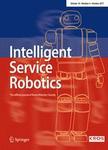版权所有:内蒙古大学图书馆 技术提供:维普资讯• 智图
内蒙古自治区呼和浩特市赛罕区大学西街235号 邮编: 010021

作者机构:Zhejiang Univ Coll Elect Engn Hangzhou 310027 Peoples R China Zhejiang Univ State Key Lab Ind Control Technol Hangzhou 310027 Peoples R China Xi An Jiao Tong Univ Inst Artificial Intelligence & Robot Xian 710049 Peoples R China
出 版 物:《INTELLIGENT SERVICE ROBOTICS》 (智能服务机器人)
年 卷 期:2022年第15卷第4期
页 面:537-555页
核心收录:
学科分类:12[管理学] 1201[管理学-管理科学与工程(可授管理学、工学学位)] 08[工学] 0811[工学-控制科学与工程]
基 金:Natural Science Foundation of China [61873235, 62173294] NSFC-Zhejiang Joint Fund for the Integration of Industrialization and Informatization [U1909206] Fundamental Research Funds for the Zhejiang Provincial Universities [2021XZZX014]
主 题:Multi robot systems Path planning Moving robots Industrial automation Optimization algorithms
摘 要:Collision-free path planning is indispensable for the multi-robot system. Many existing multi-robot path planning algorithms may no longer work properly in the narrow-lane environment. We propose in this paper a dual-layer algorithm to deal with the multi-robot path planning problem in the narrow-lane environment. In the first layer, the integer programming technique primarily based on distance metrics balances the optimality of the generated collision-free paths and the computation time of the algorithm. In the second layer, fast feasible heuristics are applied to make sure the solvability of the proposed integer programming approach in the first layer. In the dual-layer algorithm, specific traffic policies for each narrow lane are implemented to generate a collision-free path for every robot while maintaining the narrow lane free, besides the collision avoidance approach at the robotic level. With this, inter-robot collision in the narrow lane is avoided, and the algorithm s efficiency in producing collision-free paths increases. Simulations have been launched considerably based on the proposed assessment metrics. According to the extensive simulation data, our algorithm suggests a higher overall performance in the narrow-lane environment when in contrast with the present optimal, sub-optimal, and polynomial-complexity algorithms.